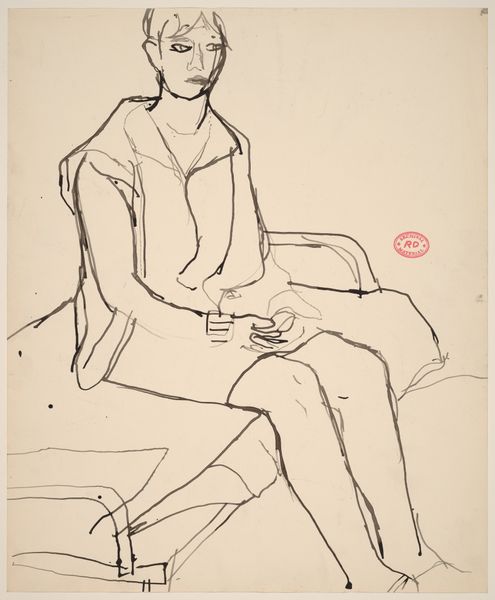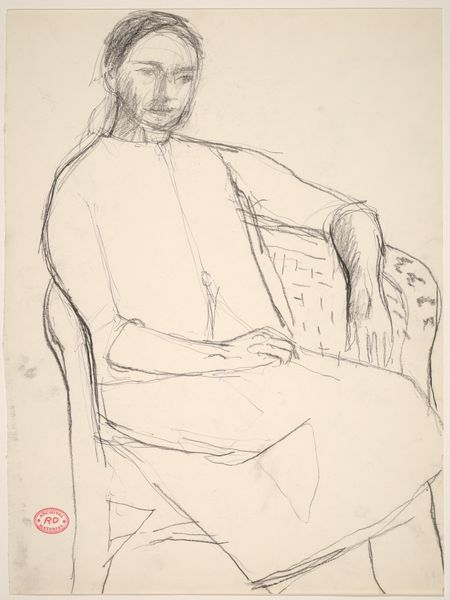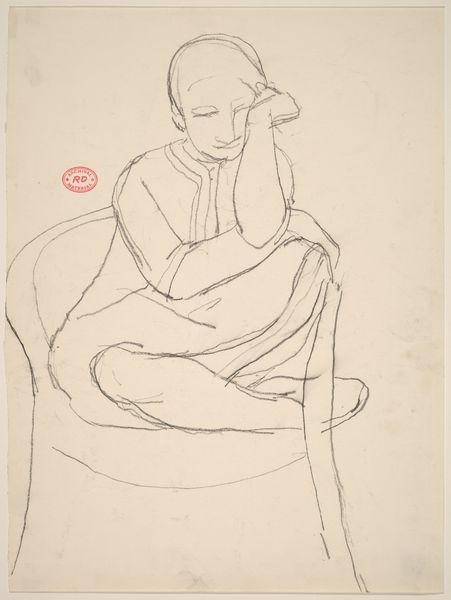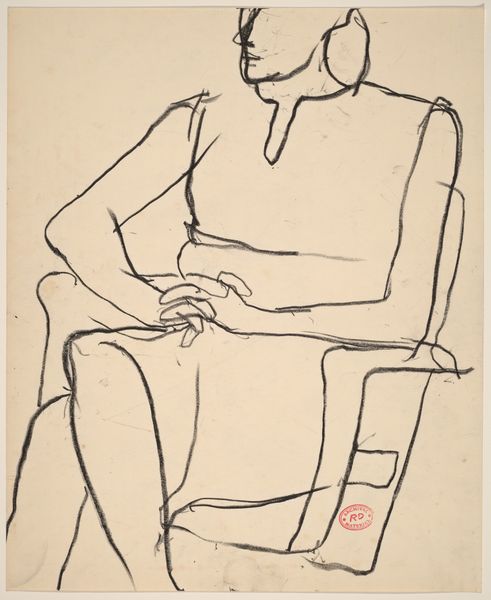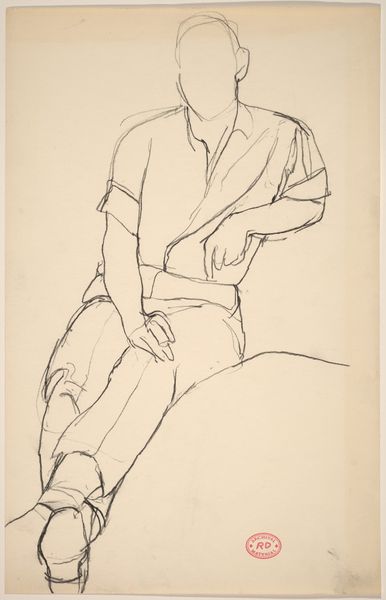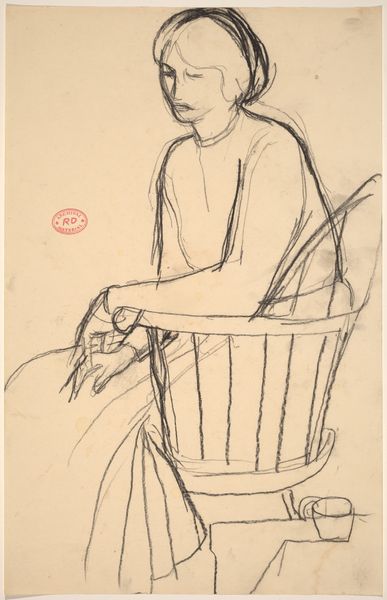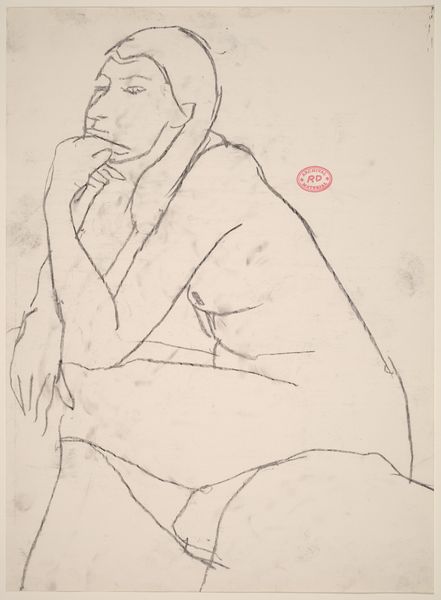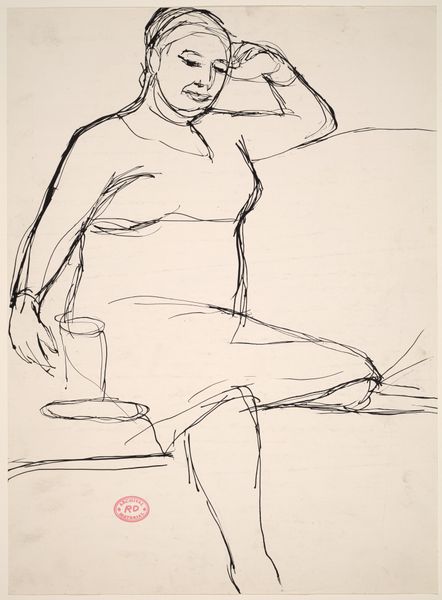![Untitled [seated female nude with right foot forward] by Richard Diebenkorn](/_next/image?url=https%3A%2F%2Fd2w8kbdekdi1gv.cloudfront.net%2FeyJidWNrZXQiOiAiYXJ0ZXJhLWltYWdlcy1idWNrZXQiLCAia2V5IjogImFydHdvcmtzLzkyZTE2ODEwLWY5OTMtNDM1ZS1hOGQxLTkyN2UzZDc4YmNmMi85MmUxNjgxMC1mOTkzLTQzNWUtYThkMS05MjdlM2Q3OGJjZjJfZnVsbC5qcGciLCAiZWRpdHMiOiB7InJlc2l6ZSI6IHsid2lkdGgiOiAxOTIwLCAiaGVpZ2h0IjogMTkyMCwgImZpdCI6ICJpbnNpZGUifX19&w=3840&q=75)
Untitled [seated female nude with right foot forward] 1955 - 1967
0:00
0:00
drawing, ink
#
portrait
#
drawing
#
ink drawing
#
pencil sketch
#
figuration
#
bay-area-figurative-movement
#
ink
#
nude
Dimensions: overall: 35.5 x 25 cm (14 x 9 13/16 in.)
Copyright: National Gallery of Art: CC0 1.0
Editor: Here we have an ink drawing by Richard Diebenkorn, made sometime between 1955 and 1967. It's called "Untitled [seated female nude with right foot forward]." What strikes me most is its simplicity, the pure economy of line. It's almost haunting in its starkness. What do you see in this piece? Art Historian: Haunting, yes, I get that! It reminds me of capturing a fleeting thought. Diebenkorn's line here is like a seismograph needle, barely registering the form, yet utterly defining it. There’s a real sense of immediacy. Do you feel that immediacy, almost as if we were looking over the artist's shoulder as he rapidly captured the essence of his subject? Editor: Absolutely! The speed is palpable, but also, it feels unfinished. It’s not trying to be a perfect representation. Art Historian: Precisely! It's not about flawless imitation. Think of it as a visual haiku: capturing the spirit, not the specifics. It’s the negative space, the "un-drawn" areas, that truly give it its power. It's in these empty spaces where the mind fills in the gaps, giving life to the sketch. Editor: So the incompleteness is part of its strength? Art Historian: Absolutely. Diebenkorn leaves space for us, the viewers, to participate in the act of creation. He’s handing us the baton, saying, "Okay, you finish it." It invites a more personal relationship with the artwork. What I take away most is that the figure is captured with what I can only define as 'tenderness' as it captures a particular and beautiful expression. I appreciate the experience of our mutual encounter! Editor: I hadn’t thought of it that way, but it makes so much sense now. It really shifts my perspective on what makes a drawing "finished". Thanks!
Comments
No comments
Be the first to comment and join the conversation on the ultimate creative platform.
